Beyond the legal limit: Understanding how alcohol affects your body and driving skills
Contents
- Beyond the legal limit: Understanding how alcohol affects your body and driving skills
- What is Blood Alcohol Content (BAC)?
- BAC Testing Methods
- Breathalyzer testing
- Blood Testing for BAC
- Urine Testing for BAC
- Saliva Testing for BAC
- Accuracy of BAC testing methods
- Science behind how alcohol affects your body
- How alcohol affects your driving abilities
- Legal limit for blood alcohol content (BAC)
- Factors that can affect BAC test results
- Understanding the Legal Limit
- Dangers of driving under the influence
- Alternatives to drinking and driving
- Conclusion and final thoughts
For many people, drinking alcohol is a social activity that can be enjoyable and fun. However, it’s important to understand that alcohol consumption can have serious consequences. One of the most dangerous consequences of drinking is impaired driving. Driving under the influence of alcohol is illegal and can lead to severe accidents, injuries, and even fatalities. Understanding how alcohol affects your body and driving skills is crucial to prevent any harm to yourself and others.
In this post, we will explore the effects of alcohol on the body, how it impairs driving skills, and what you should do to stay safe on the road. By understanding the risks involved, you can make wise choices that will keep you and those around you safe while still enjoying a night out.
What is Blood Alcohol Content (BAC)?
Blood Alcohol Content (BAC) is the measurement of the amount of alcohol present in the bloodstream. It is often used as a way to determine if a person is under the influence of alcohol. BAC is expressed as a percentage of alcohol in the bloodstream. For example, a BAC of 0.08% means that 0.08% of a person’s blood is alcohol.
BAC levels can vary based on a variety of factors such as gender, weight, and how many drinks were consumed. It is important to note that BAC levels can continue to rise even after a person stops drinking, and it can take several hours for BAC levels to return to zero.
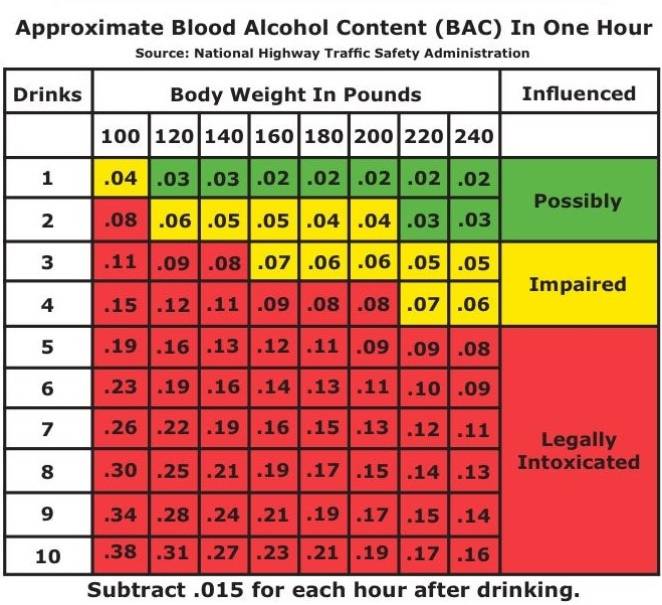
BAC testing is commonly used by law enforcement to determine if a person is driving under the influence of alcohol. It is also used by healthcare professionals to assess the level of intoxication in patients who have been admitted to the hospital due to alcohol consumption.
There are several methods used to test BAC levels, including breath, blood, and urine tests. Each method has its own level of accuracy and reliability.
BAC Testing Methods
When it comes to Blood Alcohol Content (BAC) testing, there are several methods used to determine an individual’s level of intoxication. The most common methods are breath, blood, and urine testing.
- Breath testing is often the most convenient method as it is non-invasive and can be done quickly. It measures the amount of alcohol in a person’s breath and provides an estimate of their BAC. Breath testing is usually done using a breathalyzer, which can be found in many bars, restaurants, and even personal devices.
- Blood testing is considered the most accurate method of determining BAC as it directly measures the amount of alcohol in a person’s bloodstream. This method is often used in legal situations, such as DUI cases, and requires a trained medical professional to administer the test.
- Urine testing is another method used to determine BAC, but it is not as accurate as blood testing. This method measures the amount of alcohol that has been metabolized and excreted in a person’s urine. It is often used in workplace testing, but results can be affected by factors such as hydration and the time elapsed since alcohol consumption.
Breathalyzer testing
Breathalyzer testing is one of the most common methods to test blood alcohol content (BAC). The device works by measuring the amount of alcohol in a person’s breath. When alcohol is consumed, it enters into the bloodstream and gets carried throughout the body, including the lungs. As the blood passes through the lungs, some of the alcohol evaporates into the air sacs in the lungs, which is then exhaled out of the body.
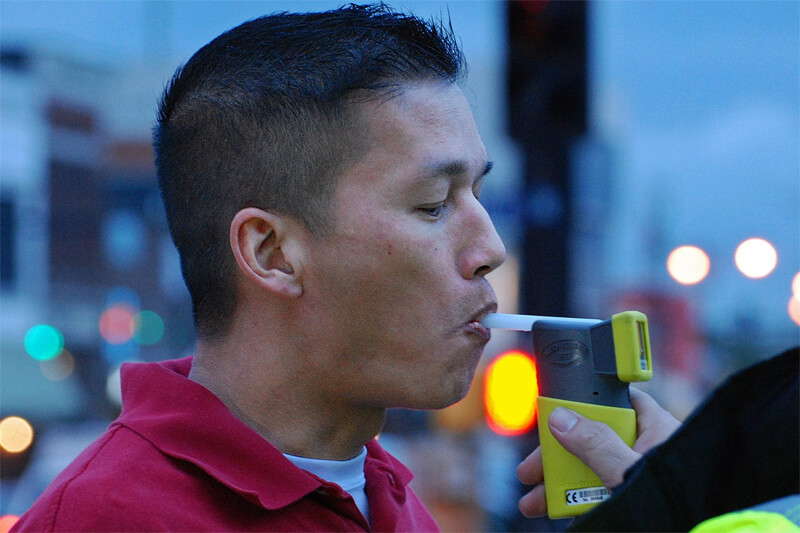
The breathalyzer contains a sensor that measures the amount of alcohol in the breath. The device works by passing a beam of infrared light through the breath sample, which measures the amount of alcohol present in the breath. The results are then displayed on a screen, which shows the person’s BAC level.
While breathalyzer testing is a convenient and non-invasive method to test BAC, it’s important to note that the results may not always be accurate. The accuracy of a breathalyzer can be affected by various factors, such as the person’s breathing rate, body temperature, and the type of alcohol consumed.
Blood Testing for BAC
Blood testing is considered to be one of the most accurate methods of determining a person’s Blood Alcohol Content (BAC) levels. This method involves taking a sample of the person’s blood and testing it to determine the alcohol concentration in their bloodstream.
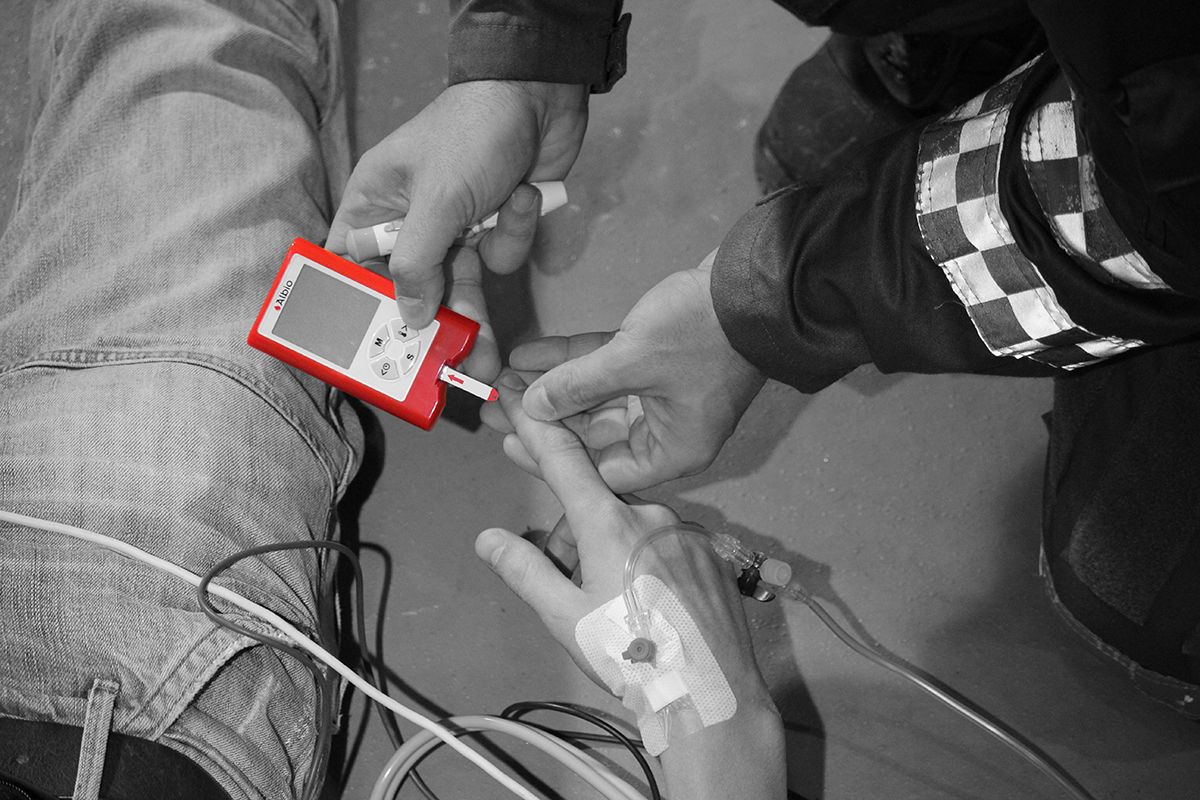
The process of blood testing is usually done in a laboratory setting, and it requires a skilled technician to draw the blood from the person being tested. The sample is then analyzed using specialized equipment to determine the exact amount of alcohol present in the blood.
One of the advantages of blood testing is its high level of accuracy, as it is capable of measuring even very small amounts of alcohol in the bloodstream. It is also considered to be very reliable, as it is not affected by other factors that can interfere with the accuracy of other testing methods, such as breathalyzers.
Urine Testing for BAC
Urine testing is another method used to detect the presence of alcohol in the body. However, unlike breathalyzers that measure alcohol content in the breath, urine tests measure alcohol levels in urine. The accuracy of urine testing is dependent on the time interval between the last drink and the time the urine sample is taken. Alcohol is eliminated from the body at a rate of about 0.015% per hour, hence the longer the interval between the last drink and the urine test, the lower the alcohol concentration detected in the urine.
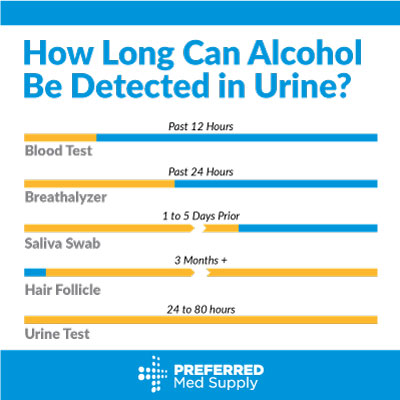
Urine testing is not as popular as breathalyzers for various reasons. One of the main reasons is that urine tests are not as accurate as breathalyzers. In addition, urine testing is invasive and requires a urine sample, which can be challenging to obtain. Furthermore, urine testing can detect alcohol in the body for a longer period, even after the person has sobered up. This makes it difficult to establish the exact time the person consumed alcohol.
Saliva Testing for BAC
Saliva testing is a relatively new method of BAC testing that is gaining popularity due to its non-invasive nature and ease of use. The testing process involves collecting a small amount of saliva using a swab that is placed in the mouth for a few minutes. The swab is then tested for alcohol content using a device that measures the concentration of alcohol in the saliva.
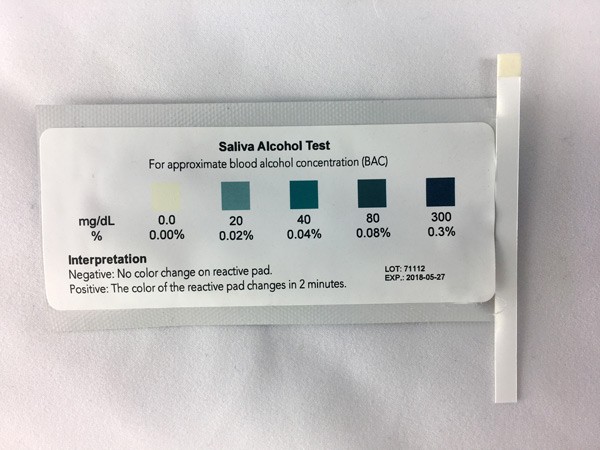
One of the main advantages of saliva testing is that it is non-invasive and can be done quickly and easily. Unlike breathalyzer tests, which require the individual to blow into a device, saliva testing can be done discreetly and without the need for any special equipment.
Another advantage of saliva testing is that it can detect alcohol in the system more quickly than other methods. This is because alcohol is absorbed into the bloodstream through the mouth and throat, so saliva testing can detect alcohol in the system within minutes of consumption.
Accuracy of BAC testing methods
The accuracy of BAC testing methods is crucial when it comes to determining whether someone is legally intoxicated or not. There are several methods used to test BAC, including breath tests, blood tests, and urine tests. Each method has its own level of accuracy and reliability.
- Breath tests are the most commonly used method to test BAC because they are non-invasive and can be administered quickly and easily. However, there are factors that can affect the accuracy of breath tests, such as the presence of mouthwash, breath mints, or other substances in the mouth that can alter the results.
- Blood tests are considered the most accurate method to test BAC because they measure the actual amount of alcohol in the bloodstream. However, blood tests are more invasive and time-consuming than breath tests, and require a trained medical professional to administer them.
- Urine tests are the least accurate method to test BAC because they measure the amount of alcohol that has been metabolized and excreted through urine, which can take several hours to occur. Additionally, urine tests can be affected by factors such as hydration levels and the presence of other substances in the body.
Science behind how alcohol affects your body
When we consume alcohol, it’s absorbed into the bloodstream through the stomach and small intestine. Once it enters the bloodstream, it’s carried to the liver where it’s broken down. The liver can process about one ounce of alcohol per hour, which is roughly equivalent to one standard drink. Any excess alcohol that cannot be processed by the liver circulates through the bloodstream to the rest of the body, including the brain.
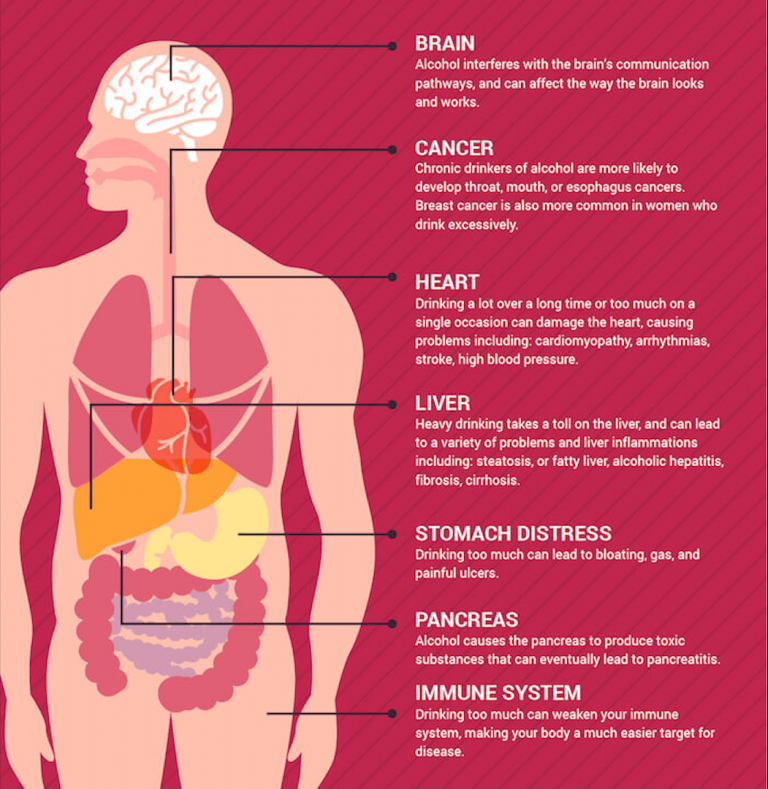
Alcohol affects the brain by slowing down its communication pathways, which can result in various changes in behavior and mood. At lower levels, it can make you feel more relaxed, less inhibited, and more sociable. However, as you continue to drink and the amount of alcohol in your bloodstream increases, it can lead to more serious effects, such as impaired judgment, slurred speech, loss of coordination, and slowed reaction times.
This is particularly dangerous when it comes to driving. A person’s ability to operate a vehicle safely is greatly compromised by alcohol consumption. It impairs vision, reduces reaction time, and decreases coordination, making it more difficult to control the vehicle and avoid accidents. Even small amounts of alcohol can affect your driving skills, which is why it’s important to understand the risks and avoid getting behind the wheel after drinking.
How alcohol affects your driving abilities
Alcohol is a depressant which means that it slows down the central nervous system. When you drink alcohol, it affects your brain function, judgment, and coordination in a negative way. This makes it very dangerous to get behind the wheel after drinking, as your driving abilities become impaired.
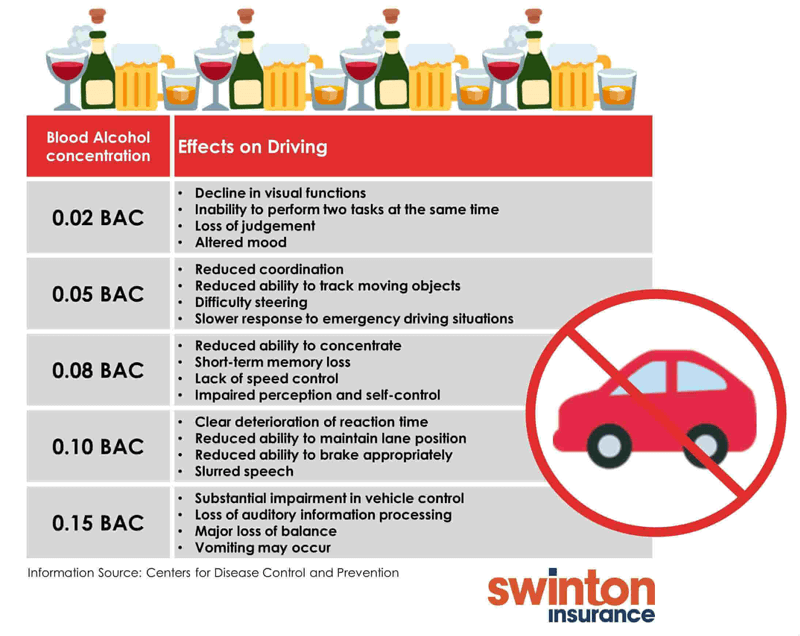
Even if you only have a small amount of alcohol in your system, your driving skills can still be negatively impacted. Your reaction time slows down and you may find it harder to concentrate on the road. Your vision may also be affected, making it harder to see things such as traffic signals, pedestrians, or other cars on the road.
With higher levels of alcohol in your system, your coordination will become severely impaired. You may struggle to control your vehicle or keep it within your lane, increasing the risk of accidents.
It is important to understand that alcohol affects different people in different ways, so there is no reliable way to determine how many drinks are safe for a person to consume before driving.
Legal limit for blood alcohol content (BAC)
In most countries, the legal limit for blood alcohol content (BAC) while driving is 0.08%. However, it’s important to keep in mind that this number is not a “safe” amount to drink before driving. In fact, even a BAC of 0.02% can affect your ability to drive safely.
The amount of alcohol it takes to reach 0.08% BAC can vary depending on factors like weight, gender, and how quickly the drinks were consumed. For example, a person who weighs less and has a slower metabolism may reach the legal limit with less alcohol than someone who is heavier and metabolizes alcohol faster.
It’s also important to note that the legal limit only applies to drivers who are over the age of 21. In many countries, there is a zero-tolerance policy for drivers under the legal drinking age or for those who are driving commercial vehicles.
Why the legal limit may not be safe for everyone
Many people believe that as long as they stay within the legal limit of alcohol consumption, they are safe to drive. However, this is not entirely true. The legal limit is set at a certain level because it is believed that a person’s ability to drive is impaired beyond that point. However, everyone’s body is different and reacts differently to alcohol.
Factors such as weight, gender, age, and metabolism all play a role in how alcohol affects a person’s body and their ability to drive. For example, a person who weighs less may feel the effects of alcohol more strongly than someone who weighs more. Additionally, women tend to have lower alcohol tolerance than men due to a higher percentage of body fat and less water in their bodies.
Alcohol can affect different people in different ways, even when consuming the same amount. Some people may feel more impaired than others after consuming the same amount of alcohol due to differences in their metabolism and other physiological factors.
Factors that can affect BAC test results
Blood Alcohol Content (BAC) testing is an important tool to measure the amount of alcohol in a person’s bloodstream. However, there are various factors that can affect the accuracy of the BAC test results. Some of these factors include:
- Time of drinking: The time interval between the last drink and the BAC test can affect the results. The BAC level is highest about an hour after drinking, and it decreases by about 0.015% per hour. Therefore, if a person takes the BAC test too soon after drinking, the results may be higher than the actual BAC level.
- Gender: Women typically have a lower water content in their bodies than men, which means that they experience higher BAC levels after drinking the same amount of alcohol as men.
- Body weight: People who weigh less tend to have a higher BAC level than those who weigh more after consuming the same amount of alcohol.
- Food consumption: Consuming food before or while drinking can slow down the absorption of alcohol into the bloodstream. Therefore, if a person takes the BAC test after eating, the results may be lower than the actual BAC level.
- Medications: Some medications can interact with alcohol and affect the accuracy of the BAC test results. For example, some medications can increase the absorption of alcohol, while others can decrease it.
Understanding the Legal Limit
When it comes to driving under the influence (DUI), understanding the legal limit is crucial. The legal limit refers to the maximum amount of alcohol you can have in your system when driving. In most states, this limit is set at a blood alcohol concentration (BAC) of 0.08%.
This limit is not, however, a free pass to drink and drive. Even if your BAC is below the legal limit, you can still be charged with a DUI if an officer believes you are impaired. This is because everyone metabolizes alcohol differently, and factors such as age, weight, and gender can all impact your BAC.
The legal limit only applies to alcohol. If you are under the influence of drugs, prescription or otherwise, you can still be charged with a DUI even if your BAC is zero.
Dangers of driving under the influence
Driving under the influence of alcohol is a serious offense that poses a significant danger to oneself and other road users. Alcohol can impair the cognitive and motor skills of the driver, leading to dangerous situations on the road.
When a person is under the influence of alcohol, their reaction time slows down, and their ability to make quick decisions is impaired. This can cause them to miss important details on the road, such as traffic signals or pedestrians crossing the road.
Alcohol also affects a driver’s vision, making it difficult to see clearly. It reduces the driver’s ability to focus on objects, and they may see multiple images or blurred images. This can be fatal, especially at night or in low-light conditions.
Driving under the influence of alcohol also affects one’s judgment, leading to poor decision-making. For example, a person under the influence may think they are capable of driving, but in reality, they are not. They may also underestimate the risks involved in driving under the influence, leading to reckless behavior on the road.
How to know if you’re too impaired to drive
Determining if you’re too impaired to drive can be tricky, especially as it can be difficult to gauge exactly how much alcohol is in your system. As a general rule, if you plan on driving, it’s best to avoid alcohol altogether.
However, if you’ve had a drink or two, there are several ways to check if you’re too impaired to drive. Firstly, pay attention to your body. If you feel dizzy, lightheaded, or uncoordinated, it’s a good sign that you’re too impaired to drive safely.
Another way to check your level of impairment is to use a breathalyzer. These devices can be purchased cheaply from drugstores or online, and they’re a quick and easy way to determine your blood alcohol content (BAC). In general, a BAC of 0.08% or higher is considered too impaired to drive legally.
Tips for staying safe when drinking and driving
Let’s be clear: drinking and driving is never a good idea. Even if you feel like you’re not affected by the alcohol, your reaction time, judgment, and motor skills are all compromised after even just a couple of drinks. So, if you’re planning on drinking, here are some tips to help you stay safe:
- Plan ahead. If you know you’re going to be drinking, make sure you have a designated driver or plan to use a ride-sharing service like Uber or Lyft.
- Pace yourself. Drinking too much too quickly can lead to dangerous levels of intoxication. Try to limit yourself to one drink per hour.
- Eat before you drink. Eating a meal before drinking can help slow the absorption of alcohol into the bloodstream.
- Know your limit. Everyone’s tolerance for alcohol is different. If you’re not sure how much you can handle, start with a lower number of drinks and see how you feel.
- Drink water. Alternate alcoholic drinks with glasses of water to stay hydrated and minimize the effects of alcohol.
Alternatives to drinking and driving
Drinking and driving is a dangerous combination, and it puts not only the driver but also passengers, pedestrians, and other drivers at risk. It’s important to understand that even a small amount of alcohol can impair your driving skills and reaction time. That’s why it’s crucial to have a plan in place before you start drinking. Thankfully, there are many alternatives to driving after drinking.
Designated driver
One of the easiest options is to have a designated driver who has agreed not to drink alcohol and will be responsible for driving everyone home safely. If you’re going out with a group of friends, you can take turns being the designated driver so that everyone gets a chance to have fun without worrying about getting home safely.
Public transportation
Another alternative is to use public transportation. Many cities have buses, trains, or taxis that operate late into the night, so you can easily get home without having to drive. If you live in an area without reliable public transportation, you can also use ride-sharing services like Uber or Lyft to get home safely.
Stay overnight
If you don’t want to rely on others for transportation, you can also plan ahead and stay overnight at a nearby hotel or with a friend who lives close by. This way, you won’t have to worry about getting home until the next day when you’re sober and alert.
Drinking and driving is never worth the risk. Always have a plan in place before you start drinking so that you can enjoy your night out without putting yourself or others in danger.
Conclusion and final thoughts
Understanding blood alcohol content (BAC) testing methods and accuracy is crucial for anyone who plans to consume alcohol and then operate a vehicle or machinery. It’s important to remember that accuracy in BAC testing can be affected by several factors, including the type of test used, the time elapsed since consumption, and individual differences in metabolism.
That being said, it’s always better to err on the side of caution and never drive while under the influence of alcohol. Not only is it illegal and puts you and others at risk, but it can also have severe consequences for your future, including legal penalties, loss of your driver’s license, and even jail time.
If you do plan to drink, always have a designated driver, use public transportation, or call a ride-sharing service. Remember that the safest BAC level is zero, and if you choose to drink, please do so responsibly.




